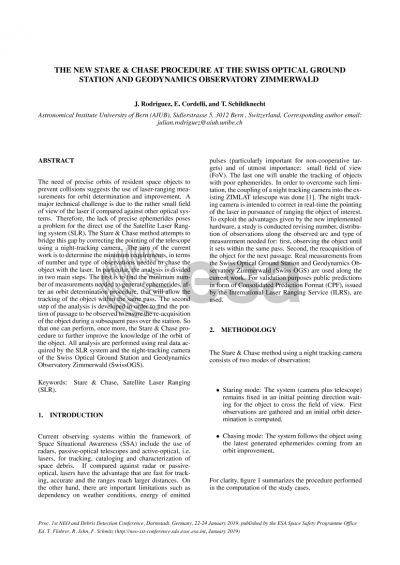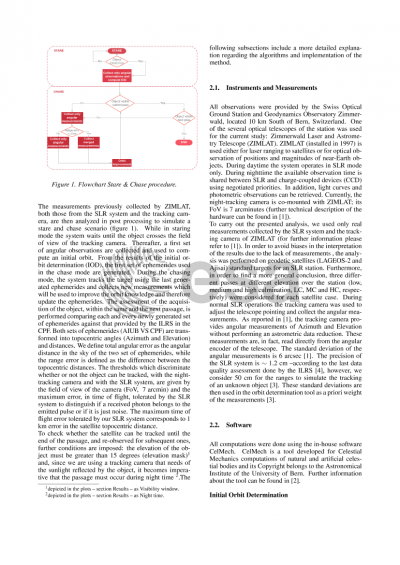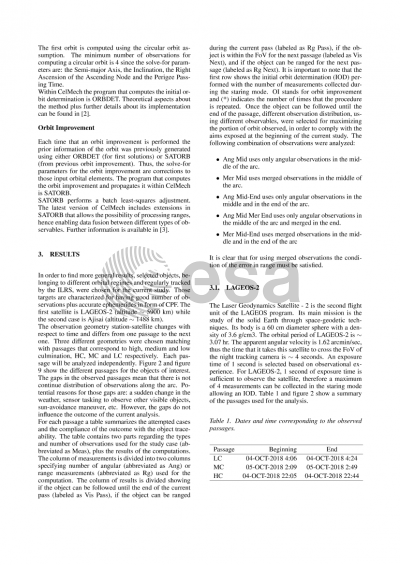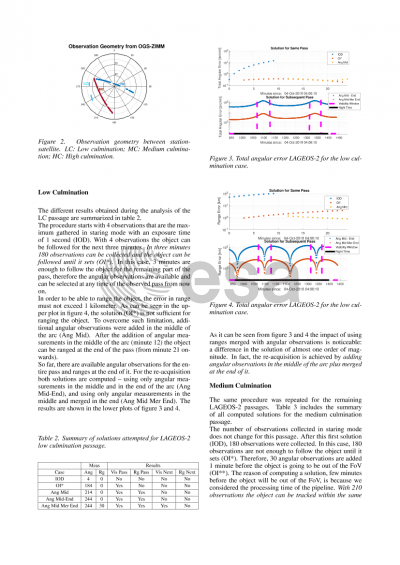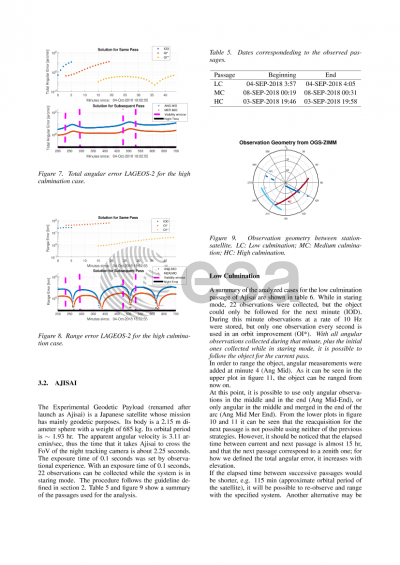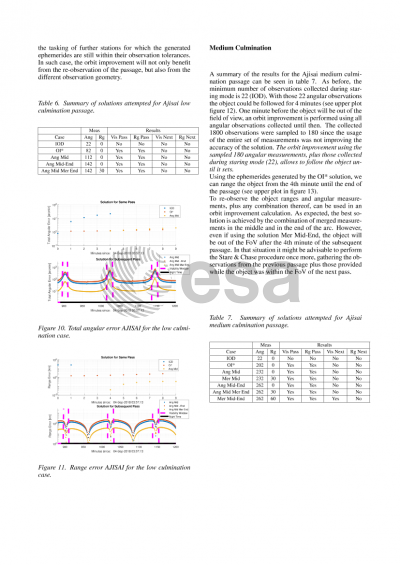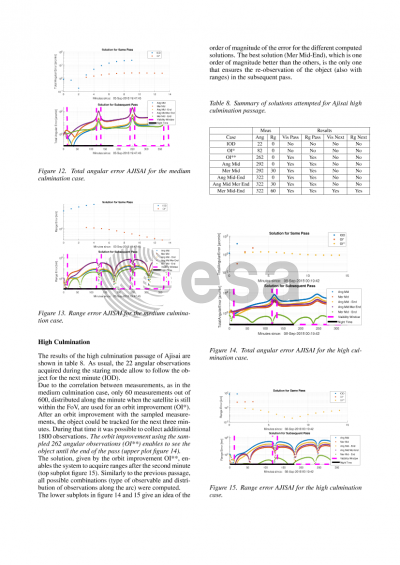Document details

Abstract
The need of precise orbits of resident space objects to prevent collisions suggests the use of laser-ranging measurements for orbit determination and improvement. A major technical challenge is due to the rather small field of view of the laser system if compared against other optical systems. Therefore, the lack of precise ephemeris poses a problem for the direct use of the laser. The Stare & Chase method attempts to bridge this gap by guiding the laser towards a correct pointing using a night tracking camera.
The aim of the current work is to determine the minimum requirements, in terms of number and type of observations needed to chase the object with the laser. In particular, the analysis is divided in two main steps. The first is to find the minimum number of measurements needed to compute an initial orbit that will allow the tracking of the object within the same pass. The second analysis is developed in order to find the portion of passage to be observed to ensure the “re-acquisition” of the object during a subsequent pass over the station. The latter will guarantee that the real-time Stare & Chase can be performed, once more, to further improve the knowledge of the orbit of the object. All experiments will be conducted using real data acquired at the Swiss Optical Ground Station and Geodynamics Observatory Zimmerwald.
Preview
